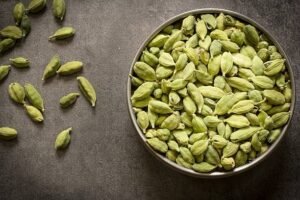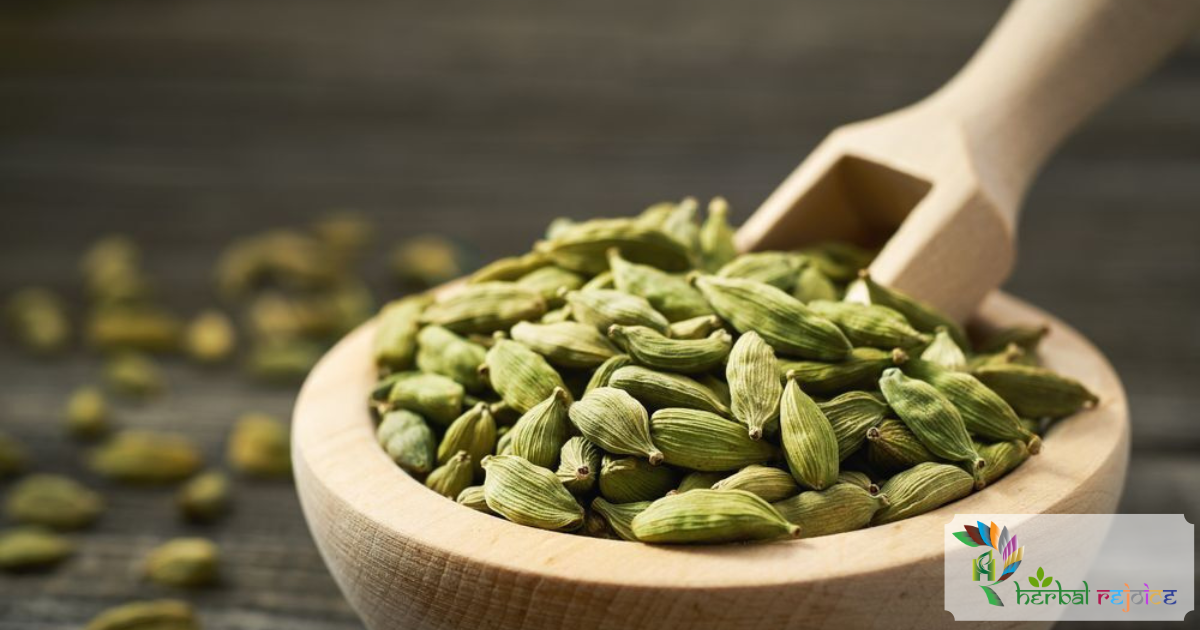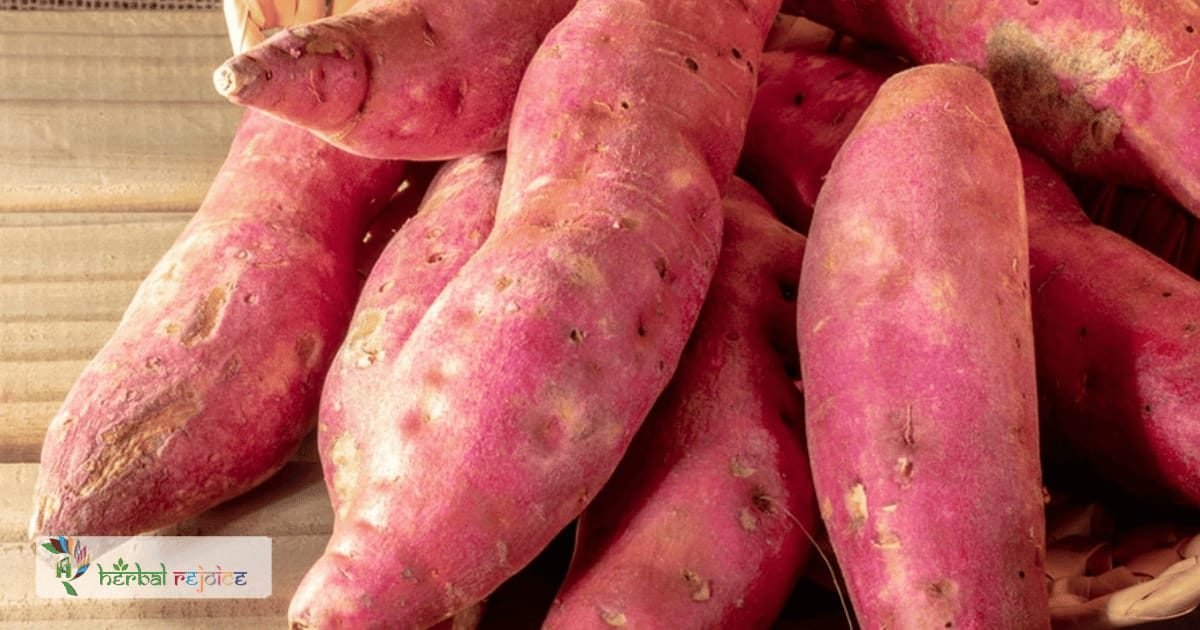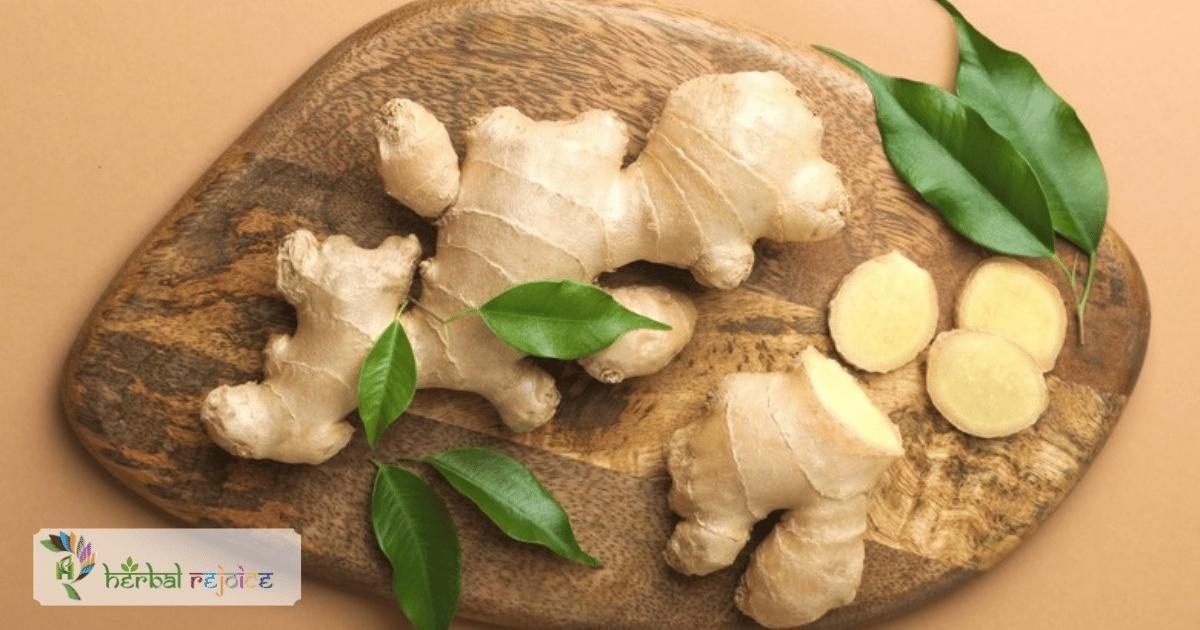Introduction
In the realm of culinary delights and herbal wonders, few spices rival the enchanting allure of cardamom or elaichi. For centuries, cultures and civilizations have prized its captivating aroma and flavor. Described in ancient Ayurvedic texts, cherished by the Greeks, and coveted during the Renaissance, cardamom has earned its place as a spice of royalty and haute cuisine. From the pages of The Arabian Nights to modern kitchen cabinets, this unique spice remains highly sought after and revered for its manifold benefits. Discover Cardamom’s culinary charm & health benefits: digestive aid, respiratory relief, and Ayurvedic treasure. Spice up your life with cardamom!
Botanical and Phytochemical Profile of Cardamom

Synonyms: Cardamom fruits, Cardamom seeds, Cardamon, Small cardamom, Elaichi.
Biological Source: Cardamom comprises the dried ripe fruits of Elettaria cardamomum Maton var, minuscula Burkill, from the family Zingiberaceae.
Geographical Source: Sri Lanka (partly in Ratnapura and Lunugala districts), Myanmar, and Malaysia host wild cardamom. India cultivates cardamom scientifically in Karnataka, Tamil Nadu, and Kerala. Guatemala claims the title of the largest producer of cardamom worldwide.
Unveiling the Macroscopic Mystique

The mesmerizing allure of cardamom is not only in its taste and aroma but also in its visual and microscopic charm.
The natural colour of cardamom ranges from green to pale buff and can turn white when treated with sulphur dioxide. Its ovoid or oblong capsules are about 2 cm long, plump, and have a sharp beaked top with a smooth or longitudinally striated surface.
The seeds are known for their triangular shape, are covered with transverse wrinkles, and possess an intensely aromatic taste and colour.
Delving into the Essence: Chemical Constituents
Within the seeds of cardamom lie its prized components. The seeds contain volatile oil comprising 2 to 8 per cent of the spice, with cineole as the active constituent. Other aromatic compounds like terpinyl acetate, terpineol, borneol, and terpinene are also present.
Cardamom seeds boast fixed oil, starch, and proteins alongside the volatile oil.
Cardamom: A Spice of Many Facets
- A Spice of Celebration: Cardamom has transcended culinary boundaries and is a universal symbol of celebration and hospitality. From sweetening breath after meals to flavouring candies and bakery goods, cardamom graces kitchens from India to Africa and from Arabia to South America.
- Medicinal Applications: Beyond its culinary role, cardamom has medicinal applications that can soothe respiratory and digestive tracts. Its essential oil has anti-inflammatory and pain-relieving properties and may reduce nausea.
- A Digestive Ally: As a carminative, cardamom can relieve gas, bloating, and mild gastrointestinal discomfort. It enlivens the digestive fire and has a mild laxative effect.
- Warming Properties: Cardamom’s warming effect makes it suitable for addressing mild circulation problems and relieving chills during colds and flu. It improves the digestibility of milk and aids in sound sleep.
- Culinary Versatility: Embrace cardamom’s culinary magic by adding it to curries, rice pilafs, pastries, and more. Its essential oil can enhance the aroma of coffee and liqueurs.
- Medicinal Potential: Utilize cardamom tea or crushed seeds to relieve respiratory spasms and sinus congestion. As a carminative, it can alleviate gas and bloating.
- Digestive Formula: Create a digestive formula using ground cardamom seeds, cinnamon, and nutmeg in equal parts to soothe indigestion after overeating.
- Cardamom as a Laxative: For mild stomach aches, especially in children, use cardamom tea as a gentle and effective remedy.
- Cardamom in Pregnancy: Pregnant women may find relief from morning sickness using cardamom mixed with grated ginger root.
- Ayurveda and Cardamom: According to Ayurveda, cardamom is a warming herb with sweet taste properties. It suits individuals with Vata or Kapha constitutions well and is applicable without overstimulating Pitta.
Precautions and Final Thoughts
As a culinary spice, cardamom is incredibly safe. However, high doses may cause mild digestive distress in individuals with active peptic ulcers.
In conclusion, cardamom stands as a tantalizing spice that transcends culinary boundaries, inviting you to embrace its aromatic charm and manifold benefits.
As an influencer for Herbal Rejoice, I invite you to explore the world of cardamom, savour its enchanting flavours, and discover the delightful journey of healthy living with this exotic spice. Let cardamom be your gateway to a world of celebration, wellness, and culinary wonders.
Embrace the allure of healthy living with cardamom, and let its warmth and aroma infuse your life with vibrancy and vitality!
Frequently Asked Questions (FAQ) about Cardamom
What are the synonyms for cardamom?
Synonyms for cardamom include Elaichi, Cardamom fruits, Cardamom seeds, Cardamon, and Small cardamom.
What is the biological source of cardamom?
The dried ripe fruits of Elettaria cardamomum Maton var, minuscula Burkill, from the Zingiberaceae family, yield cardamom.
In which Indian states is cardamom cultivated?
Scientific cultivation of cardamom takes place in India, specifically in Karnataka, Tamil Nadu, and Kerala. Notably, Karnataka’s Mysore and Kurg districts play a prominent role in its cultivation.
What is the colour of natural, unprocessed cardamom?
The natural colour of cardamom without processing is green or pale buff. It may turn white when treated with sulphur dioxide.
What are the macroscopic characteristics of cardamom?
Cardamom capsules are about 2 cm long, ovoid or oblong, plump, 3-sided, and sharply beaked at the top. They have a smooth or longitudinally striated surface.
How many chambers does each capsule of cardamom fruit contain?
Each capsule of the cardamom fruit contains three chambers, each consisting of two rows of seeds (about 5-10 seeds per chamber).
What are the main chemical constituents of cardamom seeds?
Cardamom seeds contain volatile oil (2% to 8%), with cineole being the active constituent. Other aromatic compounds like terpinyl acetate, terpineol, borneol, and terpinene are also present. Additionally, the seeds contain fixed oil, starch, and proteins.
How is cardamom used medicinally?
Cardamom is an aromatic, carminative, and stimulant and holds value as a flavoring agent. Furthermore, people employ it for medicinal purposes in the form of a compound tincture.
What are the storage recommendations for cardamom fruits?
Store cardamom fruits in well-closed, well-filled containers in cool places. Remove the seeds from the fruits and use them as needed, as storing them after dehusking could lead to the loss of approximately 30% of volatile oil within 18 months of storage.
How is cardamom often adulterated?
Adulterators often mix cardamom fruits with orange seeds and unroasted coffee grains. Adulterants of the seeds may include small pebbles and other aromatic seeds.
Which species are available depending on geographical sources?
Cardamom varieties available based on geographical sources include Alleppy, Mysore, Malabar, and Mangalore.
What medicinal qualities does cardamom possess?
Cardamom’s essential oil has anti-inflammatory and pain-relieving properties. It may also reduce muscle spasms and enhance the penetration of other drugs through the skin. Additionally, cardamom relieves respiratory spasms, sinus congestion, gas, bloating, and mild digestive discomfort. It has a mild laxative effect and can help with mild circulation problems.
How can cardamom be used for sound sleep?
Adding a pinch of cardamom powder to hot milk before bed can aid in sound sleep. Combining nutmeg, cardamom, and a teaspoon of brown sugar or honey enhances milk’s relaxing effect.
Is cardamom safe to use as a culinary spice?
Yes, cardamom is very safe to use as a culinary spice. However, high doses may cause mild digestive distress in individuals with active peptic ulcers.
Can cardamom be used during pregnancy?
Cardamom mixed with grated gingerroot can help reduce nausea and may be helpful in pregnancy for morning sickness.
How can cardamom be used as a natural breath freshener?
Chewing cardamom seeds sweetens the breath, rendering it a natural and aromatic breath freshener.
Is cardamom suitable for individuals with Vata or Kapha constitution?
Yes, cardamom is considered a warming herb that can be used liberally by individuals with Vata or Kapha constitution. It will only overstimulate Pitta if consumed in high quantities.
What is the potential of cardamom as an aromatic spice in cooking?
Cardamom is a member of the sweet spices group and is commonly used to flavour candies, bakery goods, curried spiced blends, rice pilafs, and pastries. It is a versatile and essential spice in kitchens across various regions.
How does cardamom improve digestibility, especially for people transitioning to a vegetarian diet?
Cardamom tea can promptly alleviate gastrointestinal stagnation, making it helpful for people transitioning from a meat-based to a primarily vegetarian diet.
What is the scientific evidence for cardamom’s medicinal qualities?
Cardamom has received some scientific attention, and studies have shown its anti-inflammatory and pain-relieving properties, muscle spasm reduction, and enhancement of drug penetration through the skin. A study from China reported its effectiveness in reducing the side effects of specific chemotherapy drugs.
How can cardamom be combined with other herbs to soothe indigestion?
You can mix ground cardamom seeds with fennel seeds to alleviate indigestion following excessive food consumption.
What is the geographical source of Guatemala’s cardamom production?
Guatemala is the world’s largest cardamom producer, and its cultivation contributes significantly to the global spice market.





